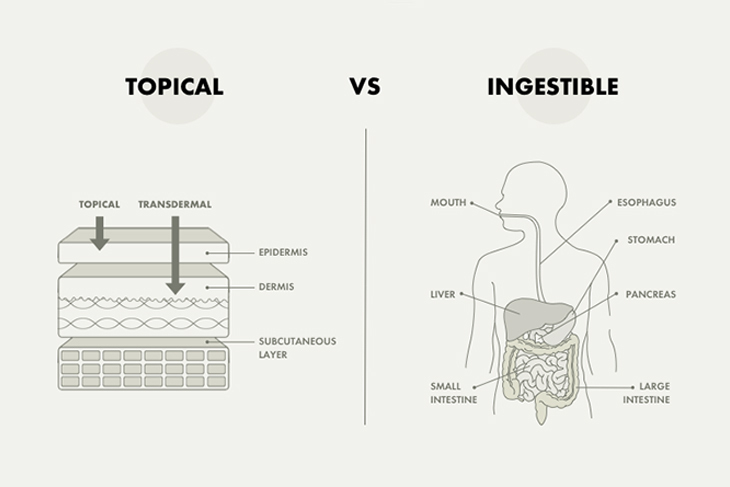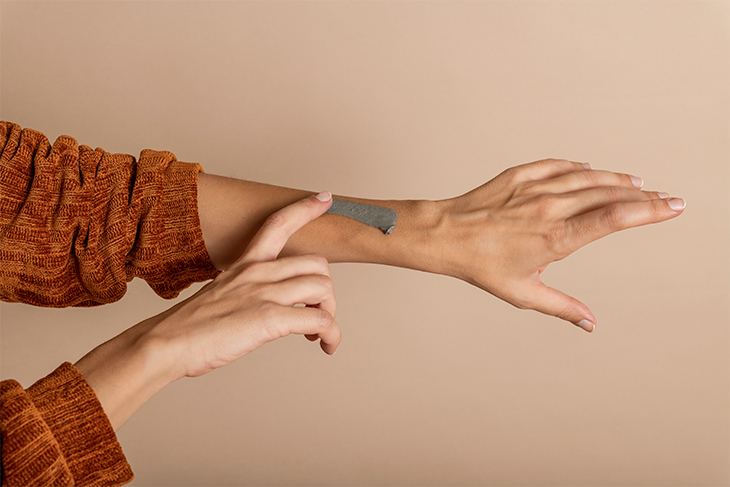Your cart is empty.
Go shop.
CBD Cannabis vs CBD Hemp
As the popularity of Cannabidiol increases around the world, and the legality of consumption continues to evolve, numerous new products...
Thank you!
We'll get back to you as soon as possible.
Your cart is empty.
Go shop.


When should you use CBD topically and how does it all work? We explain everything in detail
Our skin, or dermis, is the biggest organ in the body. It is considered our defined border and the shield of our immune system, containing within its tissues the majority of our white blood cells. These blood cells act as gatekeepers, which keep pathogens and foreign molecules from penetrating the skin and causing infections or allergic reactions.
Cannabidiol (CBD) is effective in regulating immune response. Topical and transdermal applications of CBD have been shown to treat a variety of dermal and musculoskeletal conditions and diseases involving pain or inflammation.
The difference between topical and transdermal applications is in the level of skin penetration. Topical treatments penetrate about three layers of the epidermis, and do not reach the bloodstream. Transdermal applications, on the other hand, contain substances that help penetrate through the skin, and reach the musculoskeletal tissues and bloodstream.
The most effective solutions depends on the condition being treated.
For dermal conditions such as irritation, inflammation, burns or wounds, topical solutions are sufficient and highly effective. CBD contains cannabinoids that bind to the endocannabinoid receptors in our skin (CB1 and CB2), and can activate the endocannabinoid system locally — reducing pain, irritation and inflammatory symptoms locally, without reaching the bloodstream.
With chronic conditions such as muscle pain and arthritis, allergic conditions including atopic dermatitis or eczema, and inflammatory conditions such as psoriasis, CBD must penetrate through the skin and into the bloodstream for effective treatment. In these cases, a multi systemic approach, combining internal and external CBD consumption, will yield the best results. This ensures that the CBD (and any additional beneficial substances included in the product) will reach the system or organ in which the condition first formed, and additional target sites in the body — providing more complete treatment.

While there are numerous varieties of topical cannabidiol treatments on the market, the most common forms, which are all formulated and manufactured by Kiara Naturals, are oils, salves, and lotions. Each form of treatment has unique properties and should be chosen based on the characteristics of the individual and the condition at hand.
Lotions/creams: Creams are another form of transdermal treatment that combines CBD oil and water through a process of emulsification. They are less concentrated than oils or salves but are more easily absorbed into the first layers of the dermis. Additionally, both oil and water-soluble substances can be added to creams, allowing a wider range of phytochemicals, or active ingredients, to work with. Creams do not leave the skin oily, which is important for conditions that worsen in humidity.

CBD products can effectively treat a range of dermal and musculoskeletal conditions. Various kinds of treatment types on the market address these conditions.
As the popularity of Cannabidiol increases around the world, and the legality of consumption continues to evolve, numerous new products...
Cannabidiol (CBD) is one of numerous cannabinoids, or chemical compounds, found in the cannabis plant...
Vaping is the process of inhaling vapor produced by a device that heats up liquid or herbs...
The cannabis plant, one of the most researched plants in the world due to its rich and growing medical history, contains over 400 natural compounds...